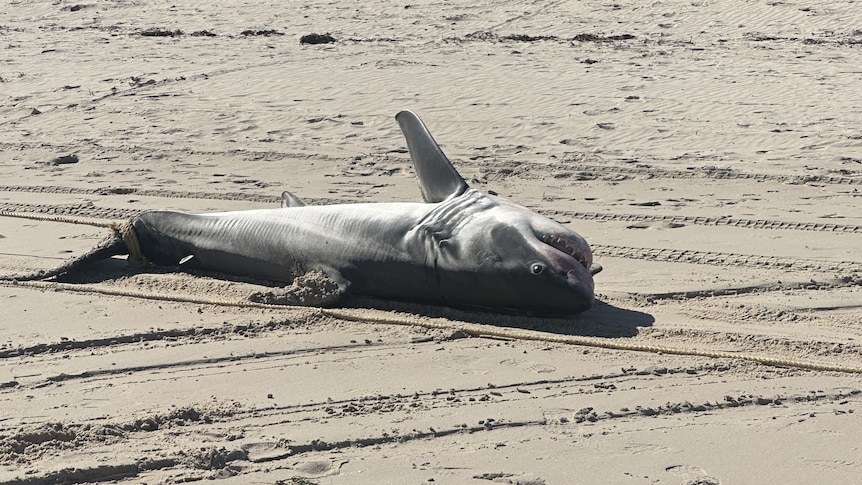By Eva Blandis,Sophie Holder
Copyright abc

Investigations into nine great white shark deaths this year have revealed at least three are likely to have been killed by the toxic algal bloom.
Warning: This story contains images that some readers may find distressing.
Government scientists have been conducting necropsies on some of the wildlife that have died since the bloom was first detected in South Australian waters.
Results released by the Department for Environment and Water show that of the nine sharks that died between April and July, three had “physical symptoms, including gill damage, consistent with a cause of death related to exposure to high levels of karenia spp”.
In each of the three, the report stated that the cause of death could not be concluded, and while “low concentrations” of brevetoxin were identified, it was “unknown if the presence or concentration” of the brevetoxins resulted or contributed to the mortality of the sharks.No cause of death was found for the remaining six sharks because their gills were too decomposed to accurately assess whether they had been affected by the bloom.
But South Australian Research and Development Institute (SARDI) executive director Professor Mike Steer said five of those six sharks may also have been affected.
“Given the timing, there is a likelihood that they too were impacted as a result of the algal bloom,” he said.
“There was one that was inconclusive where it didn’t show any signs, sharks can die from other natural causes.”
One of those was a great white that washed up on Henley Beach on May 5.
Professor Steer said sharks are fish with gills, so it was not surprising that they were being impacted by the bloom.
“We don’t quite understand the sensitivity of white sharks to the algal bloom, but from a biological perspective, it makes sense.”
The report also included the testing results of a dolphin, three penguins, a seal and a group of kangaroos, but none were found to be directly related to the bloom.
Professor Steer said it was possibly malnourishment that resulted in the deaths of other animals.
“The large amount of fish species we’ve seen wash up on the coast — and the citizen scientists have been recording this since March — it’s clearly going to have an impact on the trophic pathways, or the food web,” he said.
“There will be higher order predators that would rely on fish species for food, so there is potentially a cascading impact across the food chain as a result of this algal bloom.”
In March, large numbers of sick western grey kangaroos were observed at Tunkalilla Beach on South Australia’s Fleurieu Peninsula.
“The sick kangaroos were all found close to the beach, which was affected by the algal bloom at the time,” the report said.
“This was confirmed by detections of Karenia spp. in the ocean and adjacent creek.”
Several of the kangaroos were euthanised and seven underwent further examination.
The findings were inconclusive for five of the kangaroos, while the other two were consistent with phalaris toxicity, caused by eating a type of grass containing neurotoxins.
While brevetoxin was detected in both kangaroos tested, and another algal toxin was also detected in one, the “low levels” were “considered unlikely to have materially impacted on the health of the kangaroos”.



